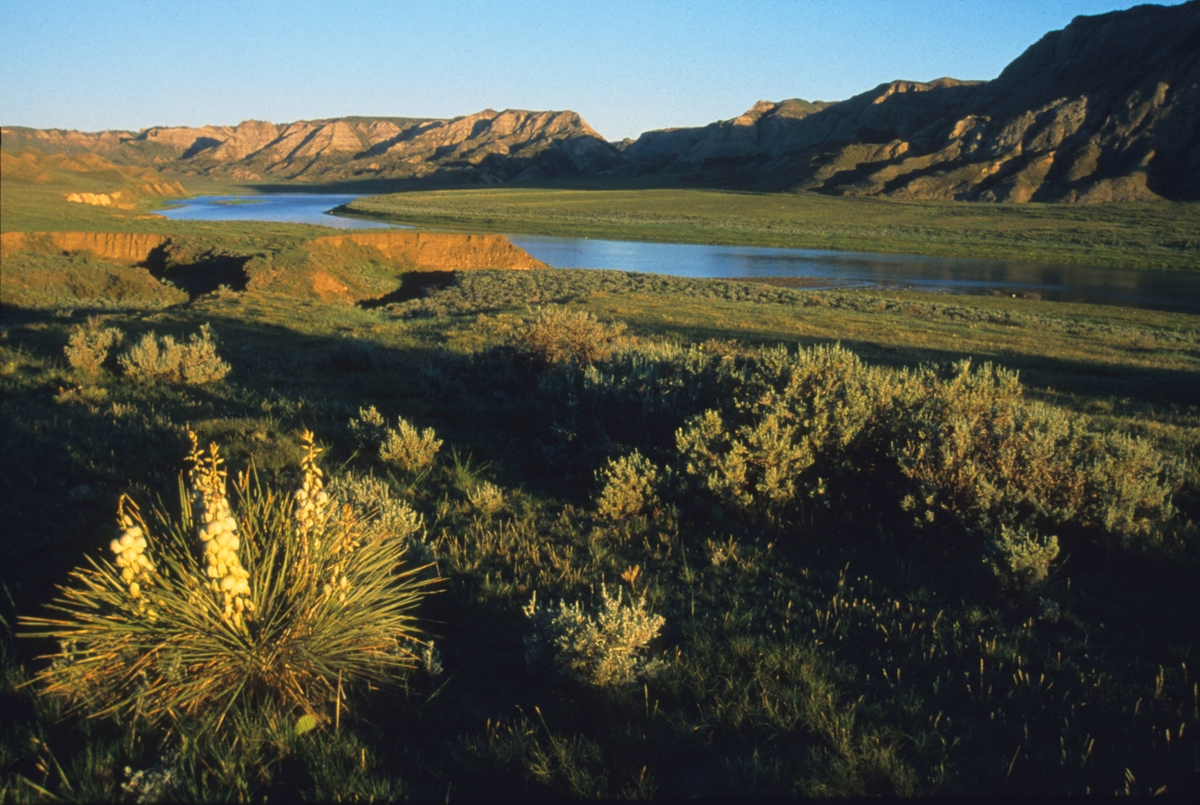Bits of Montana Wisdom (Part 2 of 5)
 The Dauphin Rapids on the Missouri River (Photo by Rick and Susie Graetz)
The Dauphin Rapids on the Missouri River (Photo by Rick and Susie Graetz)
Have you ever wondered how certain Montana places, rivers and towns got their unusual or just plain unfathomable names?
Thanks to the incoming railroad across the top of the state, towns along the Hi-Line were named by the ingenious method of having a blindfolded railway worker stop a spinning a globe with his finger and whatever it pointed to became the town’s name. Hence the cosmopolitan flair given to communities like Malta and Glasgow.
How about the Yaak? Well, it’s an Indian word, most likely from the Kootenai people, and it means “arrow.” Legend has it the Yaak River is as straight as an arrow cutting across the bow-like bend of the Kootenai River. Now when you look at a map, indeed the Kootenai is a bow, albeit quite a bent one, and although the Yaak isn’t exactly a direct line, using a bit of imagination you can see where the idea came from.
Holes … such as the Big Hole and Ross’s Hole? In the early 1800's, mountain men or fur trappers called many of the high valleys of the Northern Rockies holes. In some of them, especially Jackson Hole down in Wyoming, they held a rendezvous each summer to socialize, drink and get rid of all their money before heading back into the mountains to accumulate furs for the next season.
Capt. William Clark, who in 1806 stopped at present-day Jackson Hot Springs in the Big Hole Valley of southwest Montana, noted that meat could be cooked in the steaming water in less than six minutes. He named the area Hot Springs Valley. Early ranchers renamed the valley, which most likely never experienced a rendezvous.
And the captains of the Corps of Discovery named the Big Hole River “Wisdom River” for the astuteness of “the author of our enterprise, President Thomas Jefferson.” The town of Wisdom in the Big Hole Valley has kept the name alive, but the river lost that moniker and took on the name of the valley containing its headwaters.
Wolf Point reportedly received its name because two trappers had piled up a large number of wolf carcasses on a point along the Missouri River. Before they could skin them, the owners of the real estate, namely a band of Sioux or Assiniboine Indians, showed up, causing the trespassers to leave a rotting pile of wolf remains behind. For quite some time, the pile served as a landmark to steamboats plying the Missouri.
Plentywood was mentioned in Roberta Cheney’s book “Names On The Face of Montana.” A high school student, Gary Sunsted of Antelope, a small town south of Plentywood, wrote the following: “In the early days, a cattle outfit driving across the treeless prairie met a couple of riders coming from the other direction. They asked if there was any place around where they could find water and firewood for a campsite. The cattlemen were told to keep going ahead for a mile or two and they would find ‘plenty wood,’ as there was a growth of small timber along the bank of a creek at the point where the town now stands. The cattle outfit went on and made their camp where the town is now located.” Another version involves the outlaw Dutch Henry becoming frustrated with efforts to build a fire and told his cowhands to go up the creek where they would find plenty of wood.
Rick and Susie Graetz | Department of Geography | University of Montana
